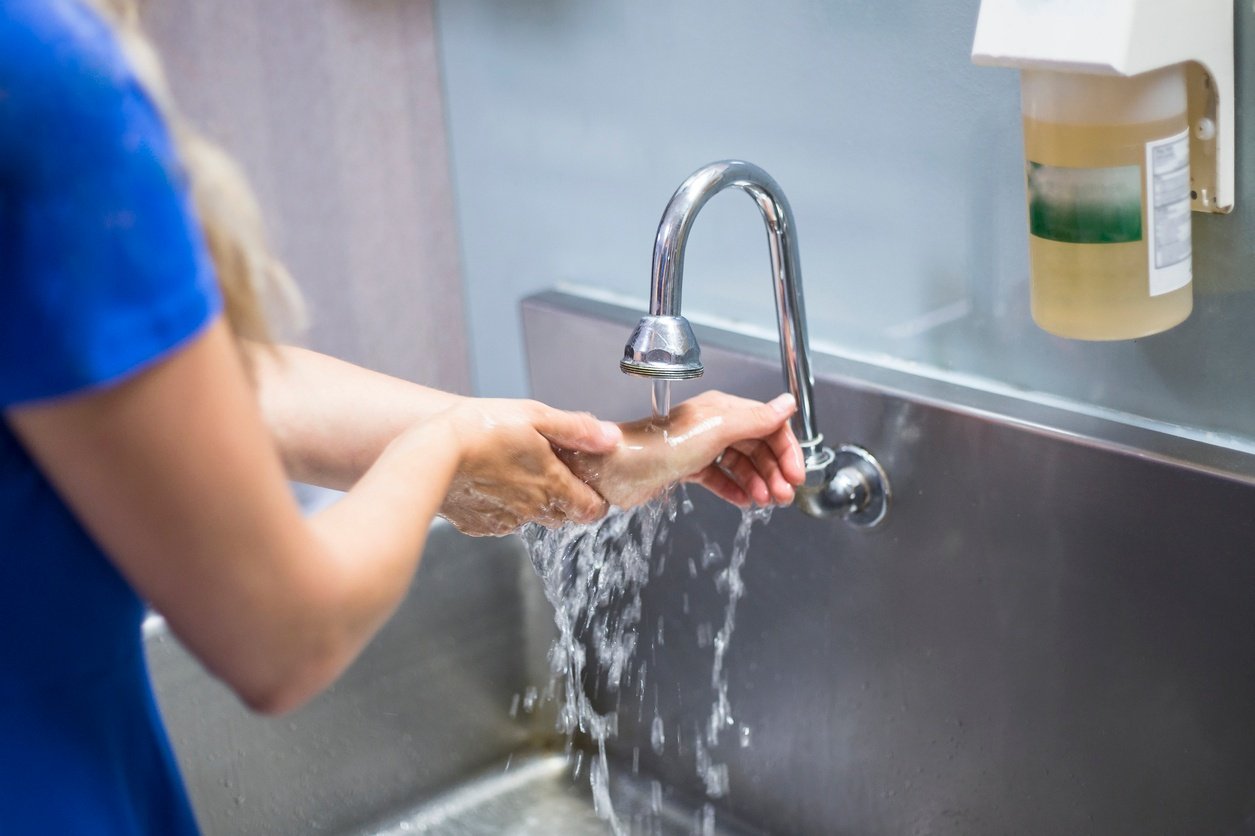
One of the most important things healthcare professionals, educators, and students know – because they are reminded about it over and over again – is the proper way to wash their hands.
With the advent of the novel coronavirus, 2019-nCoV or COVID-19, the global community is also being reminded about the simple yet effective steps of hand washing, or hand hygiene. Washing one’s hands is the single most important protection against the spread of infectious disease.
Read our blog post about COVID-19.
Unlike influenza, COVID-19 does not yet have a vaccine. Although not as prevalent as influenza, as with many respiratory illnesses, certain populations are more vulnerable than others. Children appear to only get mild symptoms of coronavirus, but older people and those who are immunocompromised can develop more serious complications.
Handwashing 101
Soap and water should be used when hands are visibly soiled or contaminated with bodily fluids, and in the following situations:
- After caring for patients with C. diff infection
- After using the restroom
- Before eating
In other healthcare situations, an alcohol-based hand rub (ABHR) can be used. Well-formulated hand sanitizing products that use alcohol as their base (rather than an antimicrobial such as triclosan) often contain conditioners and emollients that have skin-care benefits.
A good teaching practice is to incorporate hand washing into every healthcare scenario. Instructors can demonstrate the steps for thorough hand washing. Healthcare facilities may want to run refresher courses on these steps as well.
- Wet hands with water. The temperature of the water isn’t important, but scalding hot water won’t kill more germs than lukewarm water; save your skin, and use a reasonable temperature.
- Apply soap. Manufacturers suggest using 0.7 to 1.0 mL of product; in layperson’s terms, this is less than one teaspoon.
- Rub hands together, being sure to clean palms, fingers, between fingers, nails, backs of hands, and wrists. Wash hands for a minimum of 20 seconds – hum the ABCs as you do it as an easy mnemonic device.
- Rinse hands with lukewarm water.
- Dry hands with a disposable towel, and use towel to turn off faucet. Deposit towel in nearest garbage can.
(If you have multi-lingual students, NPR has an article featuring entertaining and educational hand-washing videos in several languages.)
Can I JUST Use Hand Sanitizer?
While an alcohol-based hand rub (ABHR) is the gold standard for sanitation when hands are not visibly soiled, because transmission of COVID-19 is still unclear, hand washing should be more relied upon for healthcare workers, educators, and students who may come in contact with infected patients.
However, surface disinfectants, such as Purell™ Healthcare Surface Disinfectant, have been shown to be effective to kill SARS-CoV and MERS-CoV on common high-touch surfaces. Products that have been approved by the Environmental Protection Agency (EPA) to kill CoV pathogens can proactively claim efficacy against COVID-19 as well, as long as users follow label directions.
Other Strategies to Avoid Spreading Infection
Vaccines and hand hygiene are the two most important things to do to avoid spreading germs. Other advice from healthcare professionals includes:
- If you are sick, stay at home. Employers should have a plan to encourage people to take time off without significant consequences.
- Avoid touching your face. Healthcare officials still aren’t sure the exact disease vector of coronavirus, but they do know colds, flu, and other germs target vulnerable mucus membranes, many of which are located on the face. Think: mouth, ears, eyes, nose.
- Cover coughs and sneezes with the inside of your elbow, not with your hands. If you forget, try not to touch anything, and use hand sanitizer or wash your hands as soon as you can.
- For healthcare workers, including nurses and EMTs, hand washing should always be the final step after removing and disposing of personal protective equipment.
For evolving and accurate information about Coronavirus Disease 2019 (COVID-19) visit the CDC's “What You Should Know” page about the virus.







